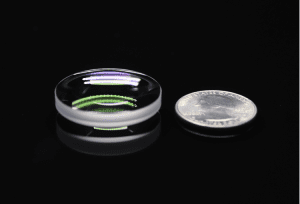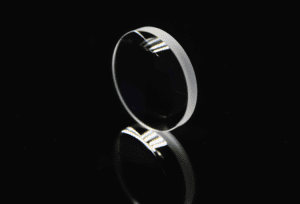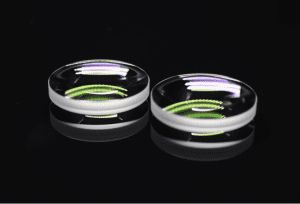Si Spherical Lens
Avantier offers a diverse range of Si spherical lenses and lens assemblies, catering to various specifications for applications ranging from microscopy and laser processing to medical research and defense. These lenses encompass converging types such as plano-convex and double-convex, as well as diverging lenses like double-concave and plano-concave.

In the case of converging spherical lenses with a positive focal length, resulting in a real and upright image, the center of the lens is thicker than the edges. Parallel rays align towards the principal focus. Conversely, diverging spherical lenses are thinner at the center and thicker at the edges, causing parallel rays to diverge and appear to originate from a virtual focus with a negative focal length, resulting in an inverted image.
Si Spherical Lenses Types
Plano Convex (PCX): Featuring one flat and one convex side, these lenses are suitable for focusing collimated light and scenarios with monochromatic illumination. Their asymmetric design minimizes spherical aberration when the object and image distances from the lens are unequal.
Double Convex (DCX): Symmetric lenses with two convex sides, ideal for imaging objects at close conjugates and image relay. Spherical aberration increases with larger conjugates, making them suitable for situations with relatively small conjugates.
Plano Concave (PCV): With one concave and one flat side, these lenses are used for beam expansion, light projection, and extending the focal length of an optical system. They have a negative focal length.
Double Concave: These lenses have two identical inwardly curved surfaces, making them ideal for light projection, expanding the focal length of an optical system, and beam expansion.
Avantier lenses come with a variety of anti-reflection coatings suitable for UV, IR, and Vis ranges. Custom optical systems can be designed based on these lenses and other optics.


Si Spherical Lenses
Spherical Aberration
Spherical aberration is inherent in the use of spherical lenses, causing parallel beams at varying distances from the lens axis to focus at slightly different locations. While it cannot be eliminated, careful lens selection and orientation can minimize spherical aberration. Positive spherical aberration occurs when peripheral rays are bent too much, while negative spherical aberration happens when they are not bent enough. Arranging lenses strategically can cancel out both positive and negative spherical aberrations for improved imaging.
Factory Standard
Substrate Material | Silicon |
Diameter | 5mm-200mm |
Focal length Tolerance | +/-1% |
Surface Quality | 20-10(after coating) |
Surface figure | l/4 @ 633nm |
Clear Aperture | >85% of central dimension |
Antireflection Coating | @ 3-12 um |
WE CAN HELP YOU!
Contact us NOW for sales & expert advice.

